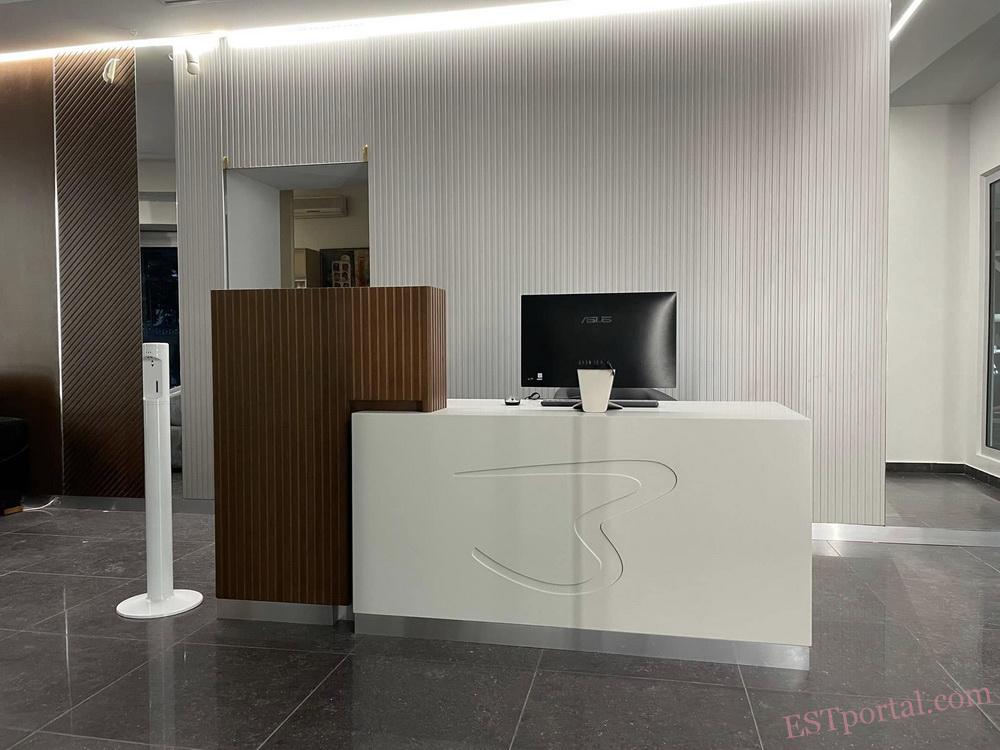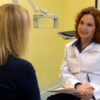
Dental Business Without Illusions: A Guide by Zablotsky
Over the years, I’ve gathered quite a few observations. I decided to compile them into a guide from Zablotsky for those who are starting a dental business or already working in one. Perhaps this will be useful to someone — considering my 30 years of experience in business and my hobby of designing dental clinics (I started with residential architecture).
So:
A dental clinic or office is not just a private practice — it’s a full-fledged business, no different from a supermarket, restaurant, or gas station.
You have to invest in business as much money as it actually requires, not just as much as you have. Five-star hotels open as five-star hotels from the very beginning.
You can borrow money for the business: from a bank, from friends, you can sell your apartment or car, or take an equipment loan (in the form of goods).
You shouldn’t take on partners — not relatives, not friends, not just people with money. Partnership is advanced-level business, and you should only enter it when you are equals — in status or in finances. If you don’t think so, then include a clear clause in your partnership agreement on how you’ll separate if needed.
From the very start, you need to choose your market segment — economy, mid-range, or premium. If you can build a business model and make money at low prices, then the best option is the economy segment (just look at the ATB or Avrora retail chains) — that’s where the most people are.
If you decide to launch in the premium segment, keep in mind: it’s not just about larger premises, more expensive equipment, private parking, valets, a spacious lobby, many treatment rooms, and a large staff. A good comparison for such a clinic is a five-star hotel. And here’s the key: don’t fake it. In a five-star clinic, everything has to be five-star — even the underwear. From my experience, a premium clinic of 300–400 m² will cost no less than €1 million.
But that’s not the main thing in premium. The real currency here is trust — and trust in the premium segment builds slowly. You’ll need several hundred thousand euros more just to maintain your team over a few years until this trust brings you a steady flow of patients.
Bakhurynskyi Clinic (my first franchise project) in Odesa
The best segment is the middle one. In other words: “price = quality.” There’s room for everyone here — both those closer to the premium and those leaning toward the economy. This segment is called “worth it.” But it’s important to have proof — why you charge more or why you charge less. In the economy segment, no explanation is needed — the lowest price is what matters there.
The worst move is shifting from one segment to another. You’ll lose the clients you had and won’t gain the ones you’re aiming for. If you’ve been working for a while, already “got your wings,” and want to raise prices and move to a different segment — close or sell your current clinic and open a new one in a different district or even a different city.
When planning clinic space (for three chairs or more), don’t calculate 14–20 m² per treatment room — use 70–80 m² instead. That automatically gives you space for mops, wardrobes, waiting areas, server rooms, and so on. For example, a five-chair clinic should have 5×70/80 = 350–400 m². In Lviv, I started with 200 m² — it felt like a lot at the time. Now I have 700 m² and it's not enough.
To cover all specialties, it’s best to open a clinic with 6–7 chairs. That’s not including pediatric dentistry — children’s care alone requires at least three chairs.
The sixth chair in an adult dental clinic should be for the hygienist. Without a dedicated chair, it’s impossible to build a system of regular visits. In a few years, you’ll likely need an additional room for another hygienist, as your patient base grows. You don’t need to buy all the equipment at once — what matters is having the rooms where you can install it later.
Under no circumstances should you invest in purchasing property — especially when launching your first clinic.
First, owning a property and owning a business (a clinic) are two completely different businesses.
Second, if you split your already limited funds between buying property and buying equipment, you'll end up with something like “neither here nor there.”
Third, if you think you'll save money by renting your own property to yourself — I have bad news. You must pay yourself market rent; otherwise, the tax authorities will eventually accuse you of underpaying taxes and make you pay the difference — plus a fine.
Fourth, all the good properties have already been bought by people who rent them out — that’s their business. What’s still available to buy usually comes with a lot of limitations and is not suitable for a dental clinic.
And fifth — the most important. Whatever you think at the beginning about the number of chairs or the “optimal” size of your clinic — it will be different from how you'll think ten years from now. So: start with renting, purchase equipment (on credit), invest in marketing (brand awareness), and build your patient base. Then, ten years later — buy your own property. By that time, you’ll have a clear understanding of what you actually want. And the property loan will be easier to manage since the equipment will already be paid off.
Do not buy or rent a space in an old building. It’s difficult to remodel due to thick load-bearing walls, and you’ll constantly have to invest in repairs (we spend $10,000 every year on the facade of our Lviv clinic on Kopernyka Street). Having a clinic in the city center, across from the Potocki Palace, sounds great — but under current conditions, it’s not a wise decision (back then we had no choice — there were no rental options).
Check if the premises have 380/400 volts (three-phase) and 100 kW of electrical capacity — so you can run compressors and autoclaves.
It’s better to choose a space with a finished (new) facade and no internal walls — so it can be easily adapted for a dental clinic. The main value of my projects is that I understand the workflow and design the layout based on logistics (who enters where and exits where), not just aesthetics.
Architects and designers usually don’t understand clinical workflows — they focus mainly on impressive visuals. And then it turns out the doctor can’t fit between the chair and the furniture, because the architect didn’t realize the spittoon is on the left, and the patient is supposed to sit from the other side?!
It’s best if all treatment rooms are aligned in a row — so it feels like a clinic, not like one room pointing one way and the other in the opposite direction. That’s chaos.
A treatment room should only have the dental chair and medical (metal) furniture — and nothing should remain on the surfaces permanently (come visit any of our seven clinics and see for yourself). You can also check out our franchise clinic in Sofia (Petar Duchev Clinic). This furniture must be disinfected before and after each patient visit.
Never, under any circumstances, place a writing desk in a treatment room — aerosol / saliva (remember COVID?) from all your patients with their hepatitis will settle on it. Furniture in the room is for storage. Just four drawers! Storage can be placed in the hallway — you don’t need expensive medical-grade cabinets for that.
The reception isn’t just a reception — it’s a front desk. It’s the place where everyone is greeted: patients, friends, and inspectors. The main rule: if the patient is standing, the administrator must stand too. If the administrator is seated, then the patient should also sit — eye to eye.
Our front desk at the Kyiv clinic
Surgical room for implant procedures. Never call a regular treatment room an operating room if it has a standard dental chair with a spittoon or even an anesthesia ventilator. A proper surgical room is a room larger than 30 m² with no water supply (no sink) and no drainage.
A surgical room has a separate dental chair (without a spittoon!!!) and suction machines for removing saliva. The furniture must not be fixed to the wall — it should be mobile (like everything in the operating room) so it can be thoroughly cleaned from all sides. Wall-mounted furniture and chairs with spittoons are a direct risk for hospital-acquired infections (read about it again if needed).
Marketing is interaction with the market — and you need to invest money in it. Just as much as you spend on renovations and equipment. You don’t mind buying a microscope, but hesitate to spend on marketing?
Marketing is advertising, PR, the look of your clinic, your doctor’s appearance, the reception area — and your own appearance. When someone says the most important thing in our business is “word of mouth,” ask them: which group is bigger — those who already know us, or those who’ve never even heard of us?
Build the right company from the start — don’t promise what you won’t be able to deliver. If you don’t teach your staff to pay taxes from day one, it will be almost impossible to change that later! And that “later” is just around the corner. It may even turn out that once you pay all taxes, there's nothing left for profit. Ask your accountant to calculate your income and expenses as if you were an LLC. It’s better to prepare for the reality where everyone pays taxes from the very beginning — so it won’t hurt later. That’s exactly what a business model is: plenty of money coming in, but empty pockets.
Learn from everyone you possibly can. Study medicine, business, and marketing.
A step toward technology is a step toward communication.
Remember: motivation doesn’t work. And if it does, it only works in the short term.
Remember: people should be managed not by people, but by systems. After all, you don’t take offense when you receive a photo ticket for breaking the rules, right?
I think that’s enough to start with. My main conclusion (Igor Gut): business is a game where you exchange risk for profit. But the risk is guaranteed. The profit — not necessarily.
As I write this, I’m thinking: the best business might be being a highly qualified professional, working at someone else's clinic from 9 to 6, earning a good salary and being happy.
Don’t hesitate — come for a tour, call, write. I didn’t have my own Zablotsky to ask questions — but you do.
Yaroslav ZABLOTSKYY – founder and owner of the trademarks “Klinika Zablotskoho” and “Dental Care Office” within the “Klinika Zablotskoho” network
Based on materials from Facebook








